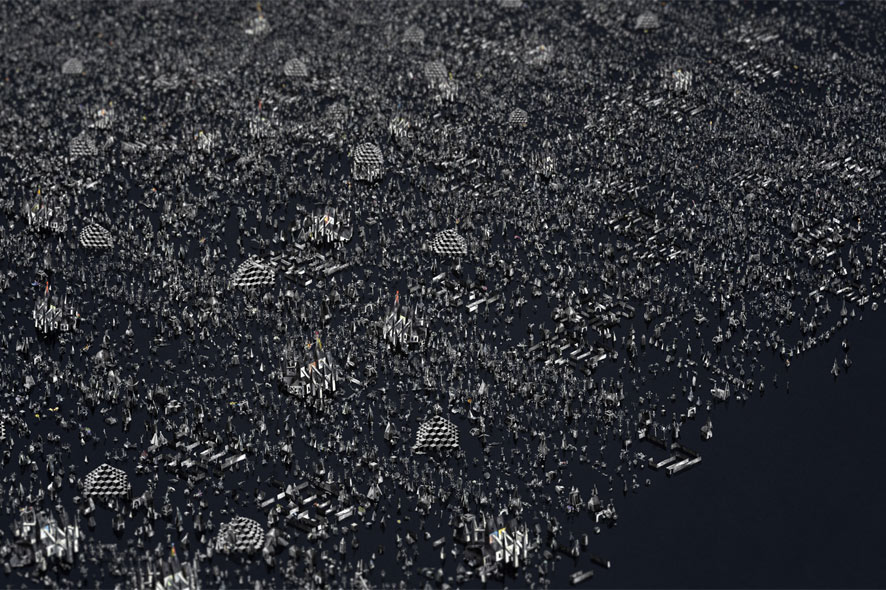We zoom into a world that’s incessantly in motion, one in which everything is connected to everything else and the figures are constantly morphing. This animated film by Boris Labbé has been singled out for recognition with a Golden Nica by the 2016 Prix Ars Electronica.
The subject of the animated film “Rhizome” is nothing less than the development of life, genetics, from the infinitesimally small to the infinitely vast. For his visual depiction of a universe in which everything is tightly interconnected, Boris Labbé, an artist living in France, has just been announced as the winner of the Golden Nica in the 2016 Prix Ars Electronica’s Computer Animation / Film / VFX category. We recently spoke to him about this animated film, which he and his crew assembled from approximately 2,300 hand-rendered drawings.
Trailer of “Rhizome”
What inspired you to create this stunning animation of movements and perpetual metamorphoses?
Boris Labbé: Almost all my animation films deal with the multitude, the repetition and the metamorphosis. Metamorphosis is one of the bases of the animated medium, it is something I feel especially when I use the drawing animation, where a sheet to another changes slightly. Tango by Zbigniew Rybczynski is a film that had a big influence on me, but in RHIZOME there is also something of Jerome Boch, M.C. Escher, Steve Reich and many others.
„Tango“ by Zbigniew Rybczynski
You use a lot of hand-drawn, traditional animation art. What, in your opinion, is the charm of using these animation techniques and materials like ink and watercolors?
Boris Labbé: Ink and watercolor is very pleasant to work in animation, it is rather a “sensual” technic because the wet brush glides over the paper, the ink diffuses into the water drop and I like the fact that each ink spot is unique. This creates something alive and vibrant. Also for me it’s a quick and easy technical execution, the drawing is done in silhouette, very simplified and very small which allowed me to animate a large number of characters.
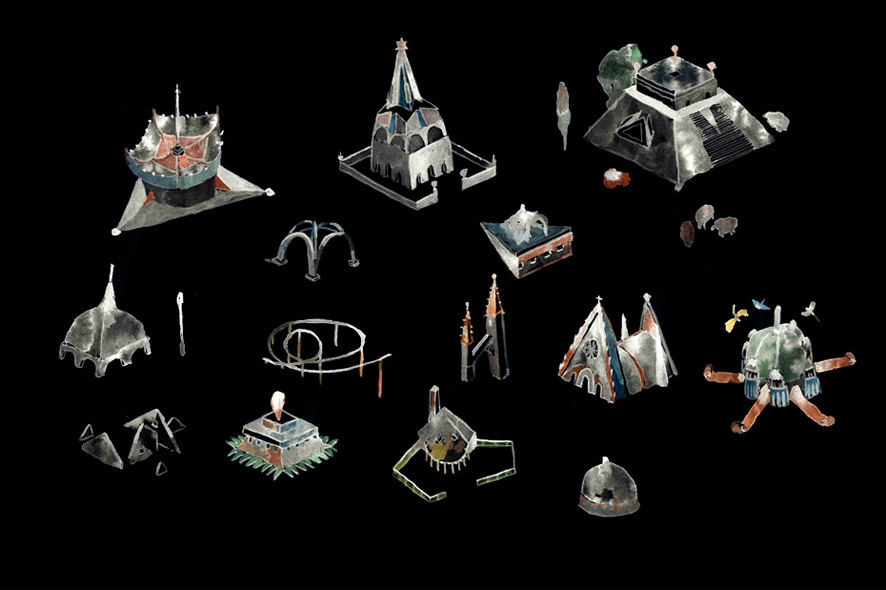
Credit: Boris Labbé
While watching your animated film, it’s a pleasure to keep an eye on every one of these thousands of moving objects. What was the biggest challenge in writing the storyboard and creating the animation?
Boris Labbé: The script and storyboard was not very complicated to do. First, I had to have the idea of the rhizome and then gradually I found how to represent it. Before making the movie I prepared a storyboard, graphics research and animation tests. The biggest challenge of the film was to produce a very large number of different animations by improvisation without being exhausted, set up the connections between all the animations sequences and do the compositing on computer. I had to be imaginative, precise and very organized.
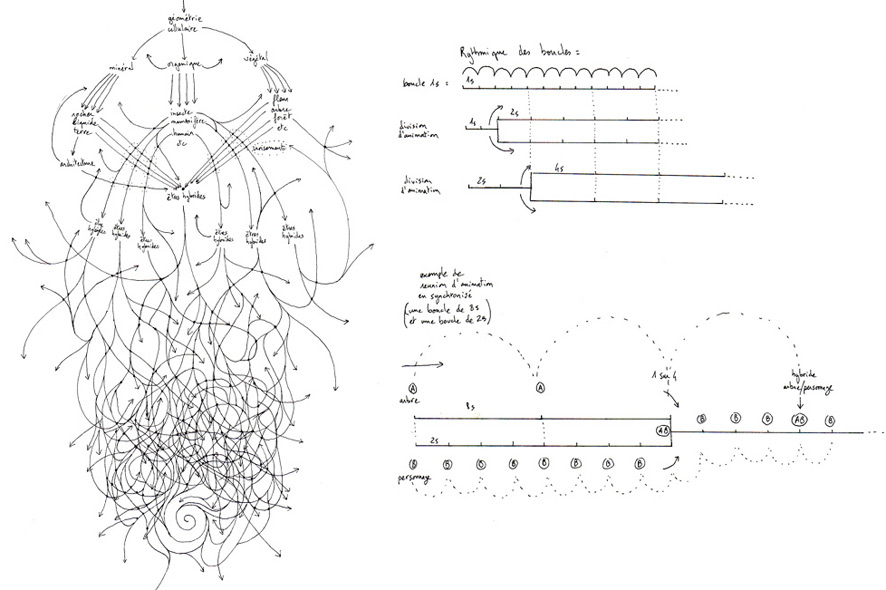
Credit: Boris Labbé
There are some similarities between your previous work in “Kyrielle” and the animated figures in “Rhizome.” What influence did your previous works have on this prizewinning work of animation?
Boris Labbé: “Kyrielle” is a film that I made in a month and a half when I was studying animation at Angoulême. Two years later I felt I could go further with this idea by bringing a more narrative approach, developing the technic and dedicating more time to achieve. “Rhizome” is the culmination and combination of several researches that I had developed in the past (Il(s) tournent en rond, Kyrielle, Cinétique, Danse macabre).
“Kyrielle”, Credit: Boris Labbé
“Rhizome” is your first professional film. What have you learned from this step?
Boris Labbé: Rhizome is actually my first professional film, but after school I also realized a video installation (Danse macabre, 2013) when I was in residence at the Casa de Velázquez in Madrid. So I started doing “professional” projects very quickly after ended the animation school. For me the real difference from when I was a student is that I am now preparing my project much more upstream. I make dossiers to find financing resource which allows me to produce the film. This also allows me to have my project more conceptually constructed and on the other hand I can better divide tasks for teamwork.
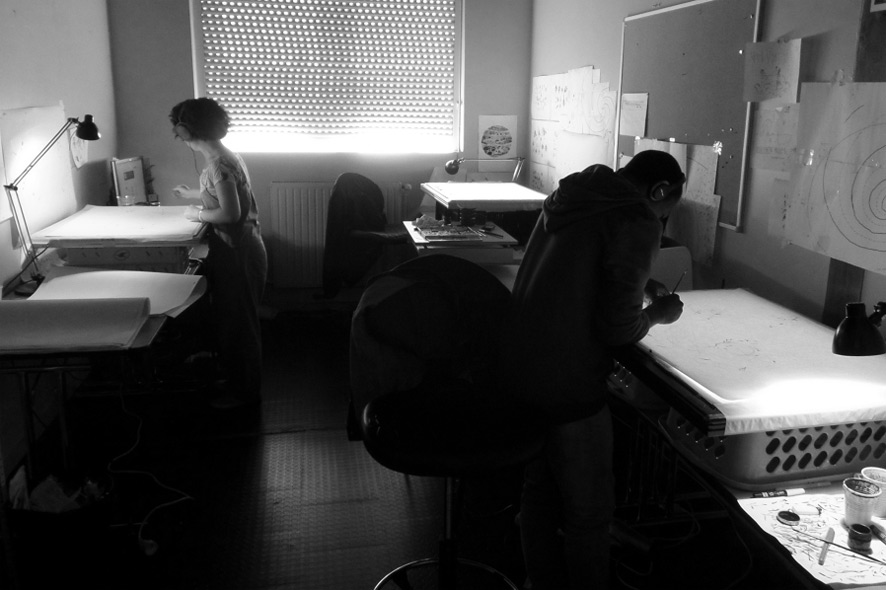
Credit: Boris Labbé
We all would love to know how much time you actually spent on this production.
Boris Labbé: I started writing and research for “Rhizome” in April 2013, then with my producer we sought financing support to produce the film which took us six months. I then did a two month residency pre-production in Strasbourg (Nov-Dec 2013), and then the real production started during eight month residency at Ciclic Region Centre (Apr-Dec 2014). At the end came the music and post-production, the film was finished in March 2015. So to realize the entire project and counting the down times it took me two years to complete the film.
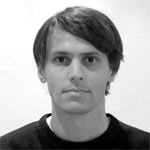 Boris Labbé (FR): After obtaining a “DNAP” (Diplôme national d’arts plastiques – the equivalent of a Bachelor’s degree) at l’Ecole supérieure d’art et de céramique of Tarbes, Boris Labbé continued his studies at l’EMCA of Angoulême (Ecole des métiers du cinéma d’animation). At l’EMCA, he produced “Kyrielle” his final film project, which in 2012 was awarded the Special Jury’s prize for Graduation Films at the Festival international du film d’animation of Annecy. Simultaneously, he developed an artistic work that is both visual and plastic. He spent a year at la Casa Velasquez in Madrid. “Rhizome” is his first professional film.
Boris Labbé (FR): After obtaining a “DNAP” (Diplôme national d’arts plastiques – the equivalent of a Bachelor’s degree) at l’Ecole supérieure d’art et de céramique of Tarbes, Boris Labbé continued his studies at l’EMCA of Angoulême (Ecole des métiers du cinéma d’animation). At l’EMCA, he produced “Kyrielle” his final film project, which in 2012 was awarded the Special Jury’s prize for Graduation Films at the Festival international du film d’animation of Annecy. Simultaneously, he developed an artistic work that is both visual and plastic. He spent a year at la Casa Velasquez in Madrid. “Rhizome” is his first professional film.
Prix meets Festival: The 11-minute animation “Rhizome” can be watched at the Ars Electronica Animation Festival, which will take place as part of the 2016 Ars Electronica Festival (September 8-12, 2016) in Linz. At the Prix forums in September you’ll also have the opportunity to meet the artists of the winning projects.
